Hibiscus plants have beautiful flowers that are extremely popular in the tropics. If you keep your Hibiscus plant healthy and constantly flowering, it is important to know how to properly fertilize this plant. These are the three main elements that a Hibiscus plant craves as they all offer positive nutrients which will benefit the plant. Let’s check out the best fertilizer for Hibiscus.
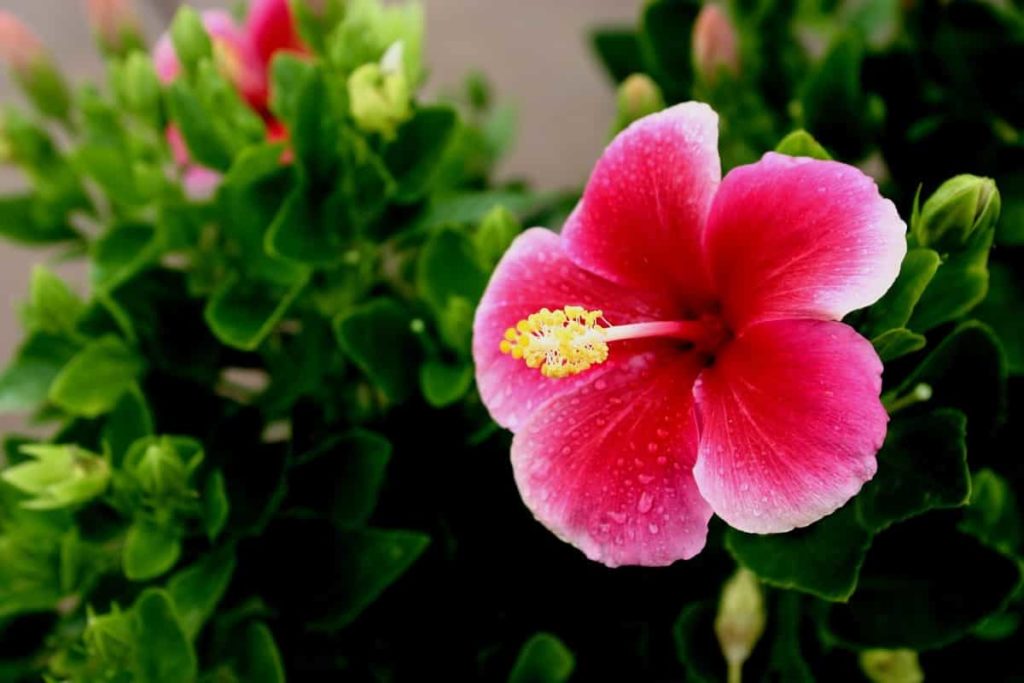
Nitrogen – Hibiscus suffers from too much or too little nitrogen. Plants at low levels lack substantial nutritional support. At the highest level, nitrogen triggers leave at the expense of flowers. Too much nitrogen causes buds to fall and can burn roots and leaves. Hibiscus requires moderate nitrogen levels in proportion to the other two numbers.
Phosphorus – Many bloom-enhancing fertilizers have more phosphorus. This is not a good sign for Hibiscus. Phosphorus does not move easily, it builds over time. Too much soil phosphorus binds other essential nutrients that need to thrive. Nutrients cannot be absorbed even when they are present. Instead of growing Hibiscus flowers, high phosphorus stops them. Keep the middle number low on your Hibiscus fertilizer.
Potassium –Potassium is the most important nutrient for the blooms and overall health of Hibiscus. It balances, organizes, and supports all aspects of plant growth. Hibiscus flowers, with their vibrant colors and sizes, demand more potassium than other blooming plants. High potassium helps leaves and flowers stay hydrated, and the need for these magnificent flowers provides nutritional support. The last number on your fertilizer label should be the highest.
Best fertilizer for Hibiscus
Homemade fertilizers for Hibiscus
Vinegar
Dilute a cup of vinegar in a gallon of water and pour all the solution into the roots of the plant. The solution, which settles around the roots, opens up important nutrients in the soil, feeding Hibiscus plants. Be careful not to find a solution on leaves or flowers, which will die.
In case you miss this: Hibiscus Gardening For Beginners – How To Start, FAQs
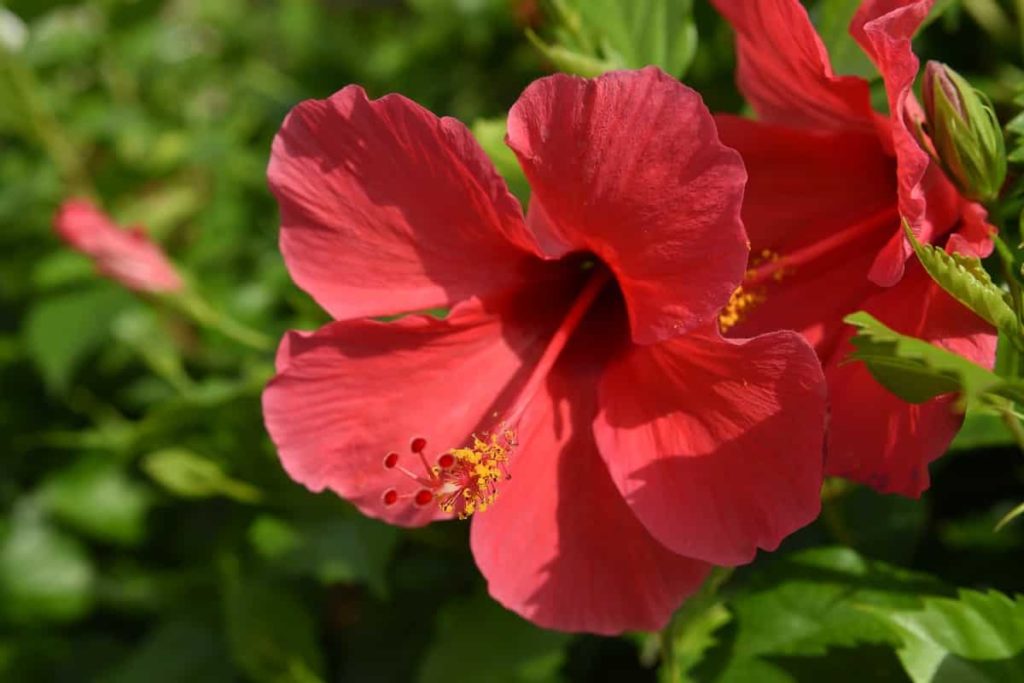
Coffee grounds
Coffee grounds provide a good supply of nutrients to your Hibiscus.
Banana peels
Bananas and their peels have high levels of potassium and moderate levels of nitrogen. These are macronutrients that are essential for the health of Hibiscus. They can be added to compost bins or piles, and this material can be used as a mulch or soil supplement when fully composted. Alternatively, the whole or chopped banana peel can be used as the source of organic nutrients when directly patterned on the soil under a Hibiscus sample dripline, or mixed with it. The dripline is the soil level area below the outermost branches of the plant.
Wood ash
Wood ash is also rich in potassium. It can be sprinkled into your compost.
Blackstrap molasses
Sugar beets are rich in nutrients such as calcium, magnesium, iron, and potassium. To use blackstrap molasses, mix the molasses in water. Spray on the soil around the base of the Hibiscus plant.
Natural fertilizers for Hibiscus
Although organic mulch is known to help preserve moisture and prevent weeds from growing, it also adds nutrients to the soil. The appropriate choices that fertilize the soil as they decompose include oak leaves, pine needles, bark chips, or shredded bark.
In case you miss this: Growing Hibiscus Plants in Pots from Cuttings, Seeds
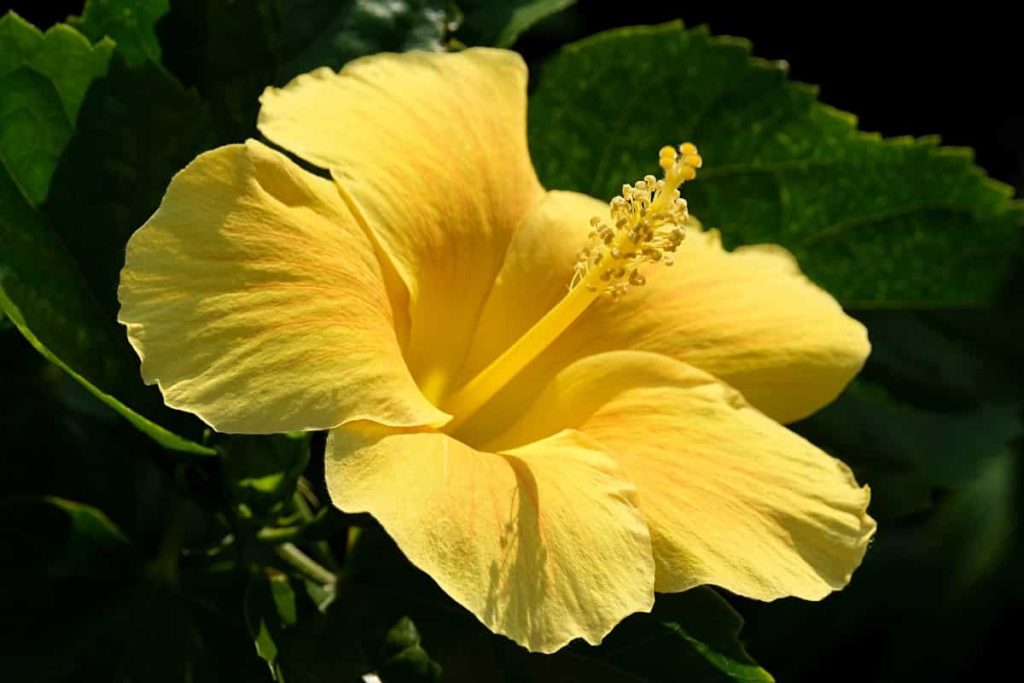
Tea leaves
Used tea grounds and fresh tea leaves contain nutrients and tannic acids that create a more fertile environment for gardens, landscapes, and container plants when added to the soil. Since tea grounds are natural, organic matter increases nutritional levels and improves soil quality as soon as they are dissolved.
Liquid fertilizers for Hibiscus
- Dry four banana peels and 3 eggshells. Add 4 tablespoons of Epsom salt by mixing them. Grind this mixture in powder in a food blender. Pour 75 ml of water on the powder, shake to mix, and water your plants with this liquid.
- Since Hibiscus plants require an abundance of micronutrients to thrive, it is wise to spray organic foliar spray to address the lack of extreme nutrients in the soil. Most water-soluble organic fertilizers can become foliar sprays, including powdered capsules or fish emulation. If your soil lacks micronutrients, you can apply them safely three times each year.
- If you have a fish tank in your house, the dirty fish water can be used to water your plants. Nothing needs to be prepared for this fertilizer as your fish has already worked. Use this dirty water to water all household plants, including your Hibiscus, every other week for great results.
- Liquid seaweed fertilizer should be applied for Hibiscus every one to two weeks for best results.
- Fill a large bucket with organic compost or manure and closed with a lid. Finish filling the bucket above water. Hole in the lid to allow the air to escape, and place the lid on the bucket. Allow compost and water mixture to stand in a cool, dry place like a storage shed for at least a week. Organic material from compost or manure will slowly leech in water to make compost tea. Dilute compost tea with water, including Hibiscus, for use on plants. Mix 1 portion compost tea in 5 to 10 portions of water. Use less diluted tea for monthly fertilization and more diluted tea for daily applications. Full-strength tea can burn plant roots or disrupt soil-dwelling germs. Put diluted fertilizer directly on plant roots or in a spray bottle for distribution in plants.
- Put 1 gallon of water in a large bucket or container. Add 1 cup of diluted compost tea. Liquid seaweed, apple cider, vinegar, and black-strap or dark molasses. Compost tea contains nitrogen and other nutrients, liquid seaweed provides plant hormones, vinegar increases soil acidity, and molasses feed beneficial microorganisms in the soil. When the Hibiscus plants are transplanted for the first time, liquid fertilizer on the roots, and pour on the seeds when starting new plants. Spray liquid fertilizer regularly on leaves and trunks to feed maintenance.
Compost manure for Hibiscus
Manure
Animal manures such as cows, sheep, horses, or poultry provide the best organic material for the Hibiscus.
In case you miss this: How to Attract Hummingbirds to Your Garden
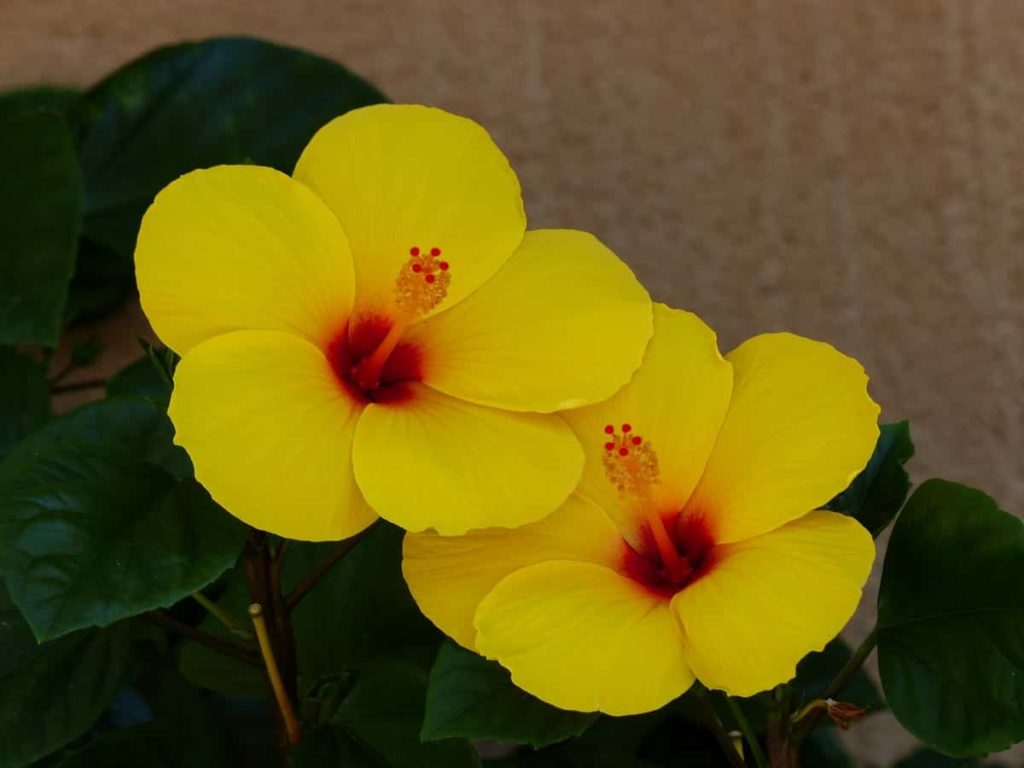
Worm castings
Worm castings are a great addition to the soil as they are much richer than regular fertilizer. This is because worm castings are digested products of specific earthworms. Worm castings heave potassium, phosphorus, nitrogen, humus, and other micronutrients that are extremely beneficial for Hibiscus.
Organic fertilizers for Hibiscus
Blood and bone meal
Blood and bone will not damage your Hibiscus. Blood and bone not only support good growth but so importantly improve the soil.
Commercial fertilizers for Hibiscus
Hibiscus plants need a fertilizer that contains a medium amount of nitrogen, low in phosphorus or phosphate, and has an overdose of potash (K). Water the plants well before and after using dry fertilizer to avoid burning the roots in dry soil. Liquid fertilizer which has been reduced to full force can be used every time plants are watered.
NPK ratio
The best Hibiscus fertilizer can be either slow-release or water-soluble. With either, you’d like to fertilize your Hibiscus with balanced compost. It will be a fertilizer with all the same numbers. Hence, for example, balanced fertilizer 20-20-20 or 10-10-10. If you are using water-soluble fertilizer, use it at half the power to avoid over-fertilizing the Hibiscus tree.
Over-fertilizing Hibiscus plants result in burning roots or providing a lot of fertilizer, which will cause no less or no flowers or yellow, leaves will fall. The need for micronutrients varies depending on the plant, its soil, and weather. In general, fertilizers of all purposes should contain trace amounts of boron, chloride, copper, iron, magnesium, manganese, molybdenum, sulfur, and zinc.
Without these trace elements, Hibiscus can develop deficiencies such as iron chlorosis, a condition that causes the death of the plant in yellow leaves and serious cases. Hibiscus prefers frequent, light food. They need less during the winter months. In the full sun, they need more. For example, apply water-soluble 17-5-24 fertilizer 1/2 teaspoon per 1 gallon of water.
Hibiscus fertilizer schedule
Hibiscus plants appreciate the light but regular application of fertilizer. This will result in a healthy plant that often blooms. For slow-release fertilizer, fertilizing in the following 4 steps:
- Early spring
- When the plant ends the first cycle of blooming
- Halfway through summer
- At the beginning of winter
For water-soluble fertilizer, you should fertilize it every 2 weeks in spring and summer. However, reduce application once every 4 weeks in autumn and winter. When fertilizing your Hibiscus tree, make sure you spread fertilizer to all the soil under the tree canopy. This is important because some gardeners only fertilize near the base, but it does not feed the entire root system.
In case you miss this: Top 18 Flowers to Grow on the Terrace
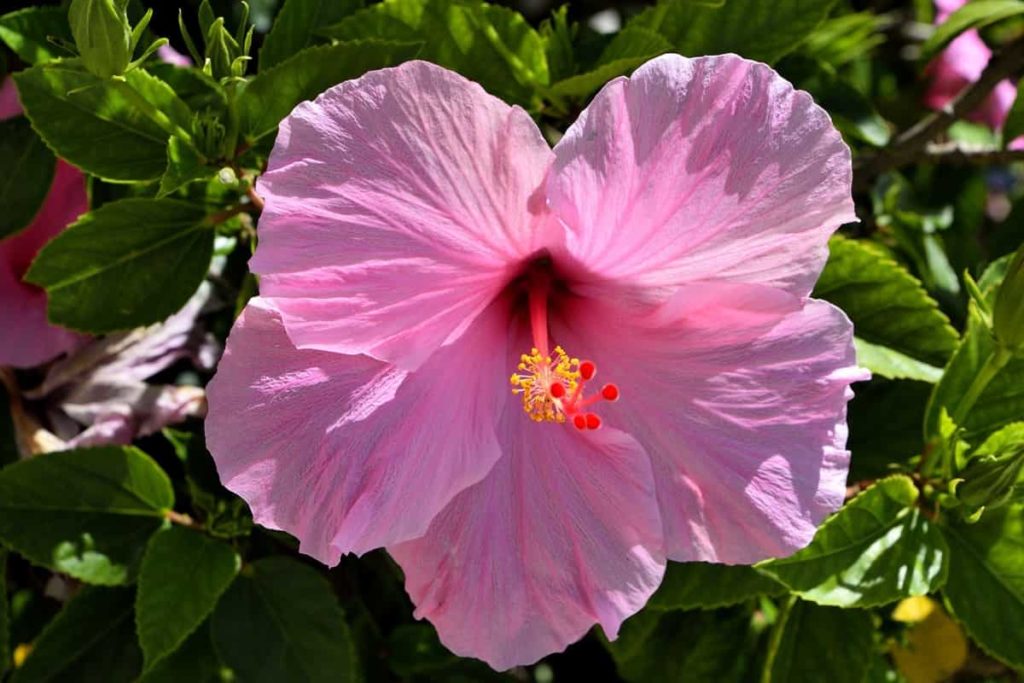
How to fertilize Hibiscus in pots
Best potting mix for growing Hibiscus 50% garden soil and river sand, 20% vermicompost, 20% cow manure, and remaining 10% neem powder and muster cake mixture. Hibiscus loves acidic soil add lemon water or vinegar to maintain soil acidity. If you’re growing your Hibiscus in a container, you’ll likely need to fertilize more often if you were growing it in the ground. Being a heavy drinker, the Hibiscus grown in a pot will also need extra water, so give it a diluted liquid seaweed whenever you water your container plants.
Fertilize Hibiscus every two weeks. Use water-soluble fertilizer combination with the type of slow-release. You can use more NPK fertilizers in the last number to encourage more blooms. Otherwise, bone meal, ran meal, dry banana peel, and onion peel fertilizer to encourage more blooms. Be sure to feed your Hibiscus with this fertilizer every other week. This is the only way to give your plant all those nutrients and make it produce healthy flowers.
Frequently asked questions about fertilizers for Hibiscus (FAQ)
Why are the Hibiscus leaves turning yellow?
Nutrient-deficient Hibiscus plants can produce iron chlorosis, causing leaves to turn yellow with green veins. Tropical Hibiscus plants usually need a lot of water, but too much or too little water can cause yellow leaves.
Why are my Hibiscus plants not flowering?
The reason why Hibiscus does not flower is usually caused by too much shade, drought pressure, or too much fertilizer. Nitrogen promotes leaves at the expense of flowers and too much phosphorus reduces the Hibiscus blooms by immobilizing nutrients in the soil.\
In case you miss this: Top 15 Flowers to Grow in the Backyard
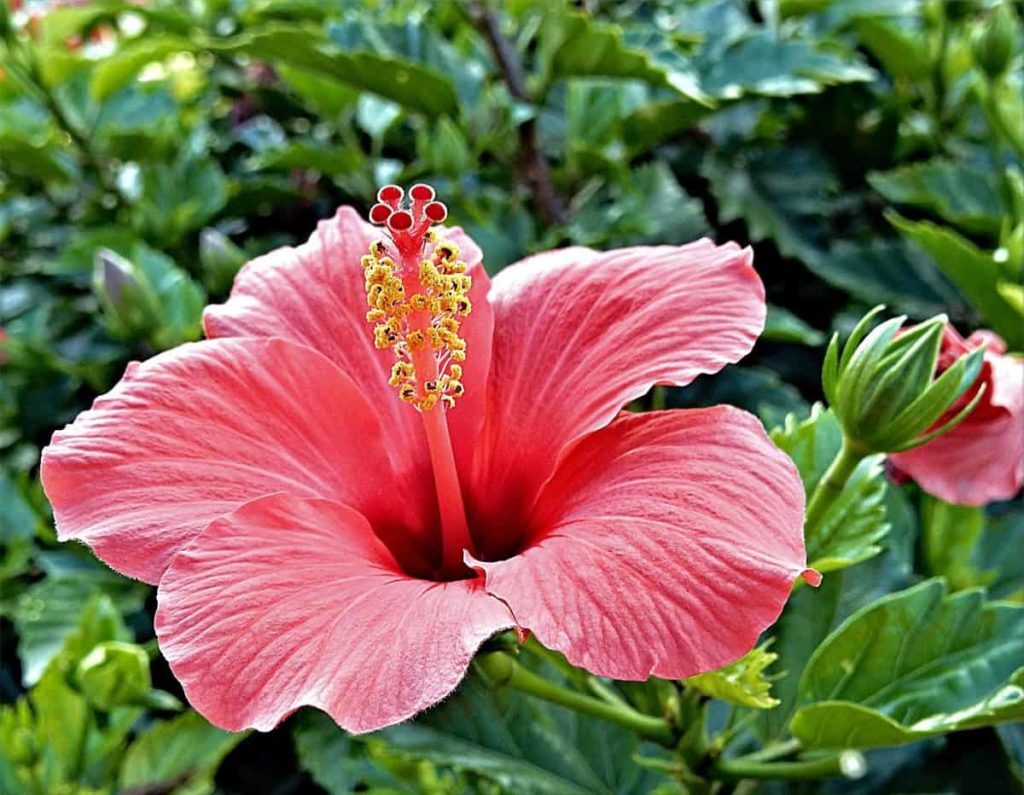
Is potassium nitrate good for Hibiscus?
You’ll see the almost immediate effects of adding potassium nitrate to your Hibiscus for more flowers, bright colors, strong wood, and roots.
Is Seasol good for Hibiscus?
Hibiscus will need to be fed with liquid manure (Seasol is a good proposition) every month as directed by the mixture you choose.
Can I use citrus fertilizer on Hibiscus?
Citrus food can also be used to feed long flowering plants such as Gardenia, Roses, Hibiscus.
- Growing Gold: Essential Techniques for Planting Pineapples
- How to Make Kalanchoe Plant Bushy: Home Remedies and Solutions
- 11 Reasons Why Your Gardenia is Not Blooming: Home Remedies and Solutions
- Eco Elegance: The Guide to Designing a Drought-Tolerant Landscape
- Gardening on a Slope: Strategies for Hillside Landscaping
- Nourish and Flourish: Top Organic Mulches for Thriving House Plants
- Everything You Want to Know about Indian Mogra Flower: Discover Uses and Growing
- Green Thumb Success: Expert Tips for Cultivating Greenhouse Pumpkins All Year Round
- Maximize Growth & Flavor: The Ultimate Guide to Companion Planting in Herb Gardens
- How to Control Rhododendron Problems Naturally: Home Remedies and Organic Ways to Fix Them
- Natural Magic: The Remarkable Benefits of Cinnamon for Plants
- Best Steps to Revive Dying Tulip with Natural and Organic Treatment
- 10 Reasons Why Your Angel Trumpet is Not Blooming: Remedies and Treatment
- How to Fix Periwinkle Leaf and Flower-Related Problems: Natural Remedies and Solutions
- How to Fix Zinnias Leaf and Flower Problems: Discover Natural and Home Remedies
- Organic Steps to Induce Lemon Tree Flowers: A Comprehensive Guide
- Bloom Booster: Crafting the Perfect Homemade Bougainvillea Fertilizer
- Optimizing Growth: A Guide to Applying NPK Fertilizer for Potted Plants
- 10 Best Homemade Fertilizers for Rubber Plant: DIY Recipes and Application Method
- How to Boost Female Pumpkin Flowers: Effective Steps for More Flowers and High Yields
- Transform Your Indoor Garden: Top Benefits of Pink Salt for Houseplants
- 10 Best Homemade Fertilizers for Peacock Plants (Calathea): Easy DIY Guide
- Unlock Blooms: 9 Reasons Why Your Potted Chrysanthemum is Not Blooming
- 8 Reasons Why Your Potted Hibiscus is Not Blooming: Fix it with Simple Solutions
- Unlock Blooms: 9 Key Reasons Your Potted Frangipani Won’t Flower
- 10 Reasons Why Is My Ice Plant Not Blooming: Remedies and Treatment
- 10 Reasons Why My Potted Hydrangea Not Blooming: Treatment and Remedies
- 10 Reasons Why is My Wisteria Not Blooming: Remedies and Treatment
- 10 Reasons Why is My Goldfish Plant Not Blooming: Remedies and Treatment
- Maximize Your Space: Ultimate Guide to Balcony Gardening with Grow Bags
- 10 Reasons Why Your Iris is Not Blooming: Remedies and Treatment
- 10 Reasons Why Your Anthurium Plant is Not Blooming: Treatment and Remedies
- 10 Reasons Why Your Aquaponic Plants Are Not Flowering: Remedies and Treatment
- 10 Reasons Why Your Agapanthus is Not Flowering: Remedies and Treatment
- Ultimate Guide to Brown Turkey Fig: Steps to Growing Brown Turkey Figs
- How to Grow Acai Berry: Propagation, Planting, and Care